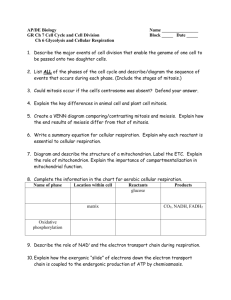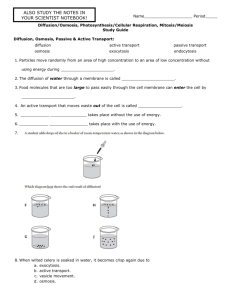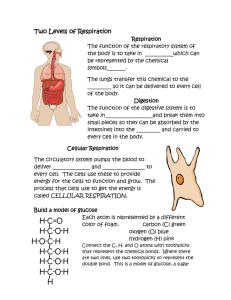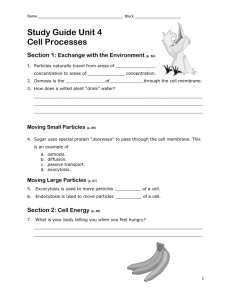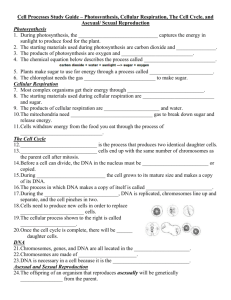ch_5_-_life_sg
advertisement
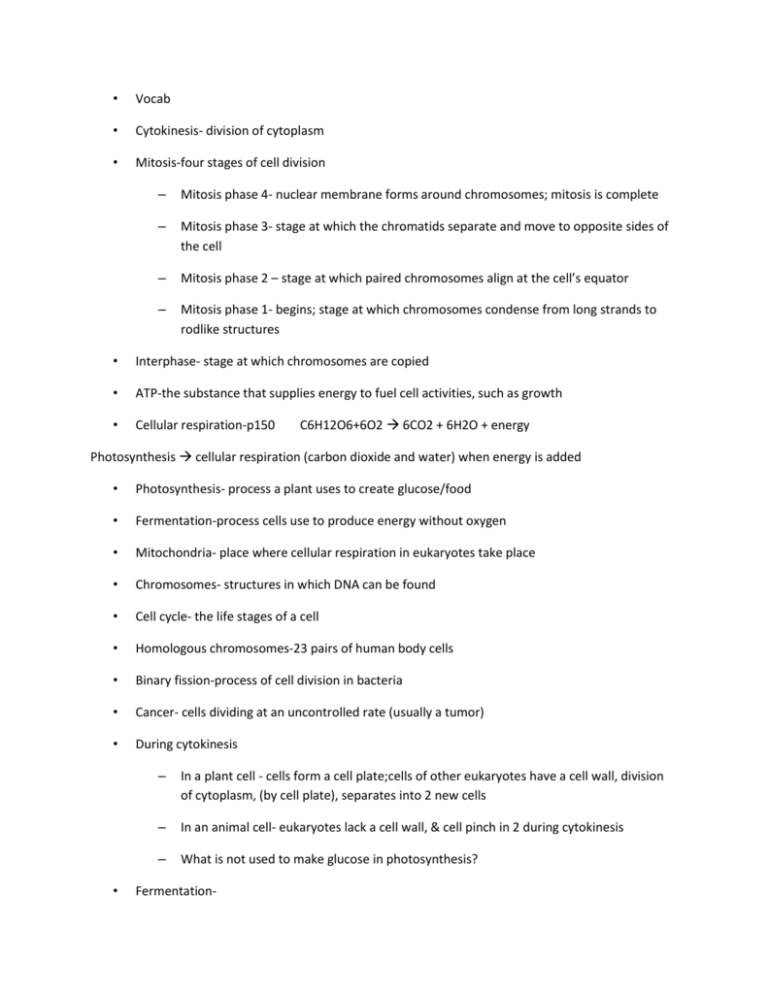
• Vocab • Cytokinesis- division of cytoplasm • Mitosis-four stages of cell division – Mitosis phase 4- nuclear membrane forms around chromosomes; mitosis is complete – Mitosis phase 3- stage at which the chromatids separate and move to opposite sides of the cell – Mitosis phase 2 – stage at which paired chromosomes align at the cell’s equator – Mitosis phase 1- begins; stage at which chromosomes condense from long strands to rodlike structures • Interphase- stage at which chromosomes are copied • ATP-the substance that supplies energy to fuel cell activities, such as growth • Cellular respiration-p150 C6H12O6+6O2 6CO2 + 6H2O + energy Photosynthesis cellular respiration (carbon dioxide and water) when energy is added • Photosynthesis- process a plant uses to create glucose/food • Fermentation-process cells use to produce energy without oxygen • Mitochondria- place where cellular respiration in eukaryotes take place • Chromosomes- structures in which DNA can be found • Cell cycle- the life stages of a cell • Homologous chromosomes-23 pairs of human body cells • Binary fission-process of cell division in bacteria • Cancer- cells dividing at an uncontrolled rate (usually a tumor) • During cytokinesis • – In a plant cell - cells form a cell plate;cells of other eukaryotes have a cell wall, division of cytoplasm, (by cell plate), separates into 2 new cells – In an animal cell- eukaryotes lack a cell wall, & cell pinch in 2 during cytokinesis – What is not used to make glucose in photosynthesis? Fermentation- • – Takes place in muscle cells when they need energy – Not receiving oxygen to make ATP by cellular respiration – Fermentation when needs energy and no oxygen Oxygen– Released during photosynthesis – In cellular respiration oxygen is combined with glucose; produces energy; when this happens plants grow, repair damaged cells, replace dead cells – Plants can survive in the world without animals(mammals), but animals(mammals) can not survive in the world without plants. – We need plants plants produce oxygen we need to breathe, plants help provide a food source. – Plants make their own food, take carbon dioxide and water to make glucose. They help recycle the carbon dioxide/oxygen; are a food source for others – Learning about cell growth, division, and behavior under different circumstance helps gain to prevent plants from dying, mutating, using DNA to replicate (make more of a certain plant). Helps understand nutrition and what foods help keep plants healthy and strong • What do animal cells require? (2 things) • __________ • Animal cells produce what 3 things in mitochondria during cellular respiration? • ___________ ___________ ___________ • P158-159 Phases of Mitosis; onion root ___________
